Traditionalist Issues
 |
 |
 |
 |
 |
 |
 |
Dialogue Mass - XCV
A Piece of Palestine in Loreto
Now we come to the scientific evidence that established the identity of the material of the Holy House in Loreto with a type of stone that was foreign to Italy but native to Palestine. It was only natural that the Catholic faithful, while believing in the testimony of miracles wrought at Loreto, would also wish to satisfy their curiosity about the actual fabric of the Holy House and wonder if there was any tangible evidence to show that it came from the region of Nazareth.
That does not mean that they doubted the authenticity of the tradition; they were simply seeking evidence to further corroborate their beliefs. And so they were generally content to accept the assurances of pilgrims who had brought back from Nazareth samples of stone that looked, to the unprofessional eye, similar to the material from which the Holy House was built.
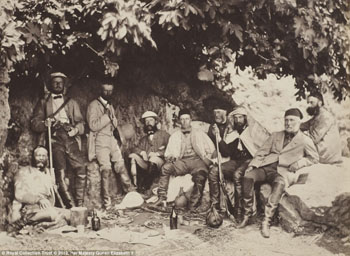 No one thought to investigate the matter further until the mid-19th century when doubts about the identity of the stone of which the Holy House was built were raised by the Anglican clergyman, Arthur Penrhyn Stanley, Dean of Westminster Abbey. Dean Stanley, as he was popularly known, was indeed a force to be reckoned with, being a high-standing figure in the Anglican Church and in Queen Victoria’s court where he was an Honorary Chaplain to the Prince of Wales (later King Edward VII). (1)
No one thought to investigate the matter further until the mid-19th century when doubts about the identity of the stone of which the Holy House was built were raised by the Anglican clergyman, Arthur Penrhyn Stanley, Dean of Westminster Abbey. Dean Stanley, as he was popularly known, was indeed a force to be reckoned with, being a high-standing figure in the Anglican Church and in Queen Victoria’s court where he was an Honorary Chaplain to the Prince of Wales (later King Edward VII). (1)
As a historian and author of Sinai and Palestine (1856), he was regarded as the foremost authority in England on the Holy Land, a distinction that led to his selection as a guide and companion to the Prince of Wales on his travels to that region. So, what Stanley had to say on the subject was taken as gospel by his contemporaries.
He described the material of the Holy House as “a dark red polished stone wholly unlike anything in Palestine,” all the buildings there being “of the natural grey limestone of the country.” (2) The outcome was potentially devastating for the Holy House tradition. It would, of course, take an expert in mineralogy (which Stanley was not) to examine the chemical and physical (including optical) properties of the stone and declare on its composition and origin.
So, at the behest of the Cardinal Archbishop of Westminster, Nicholas Wiseman, a scientific examination was made of stone from the Holy House and from buildings at Nazareth. The English Prelate enlisted the help of Msgr. Domenico Bartolini (afterwards Cardinal), (3) who was then about to make a pilgrimage to Nazareth, and who obtained from Pope Pius IX permission to remove from the Holy House small portions of both stone and mortar for scientific analysis.
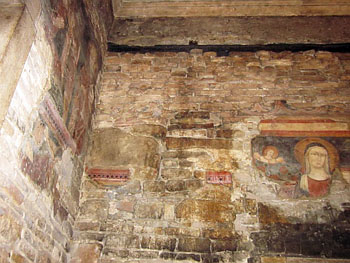
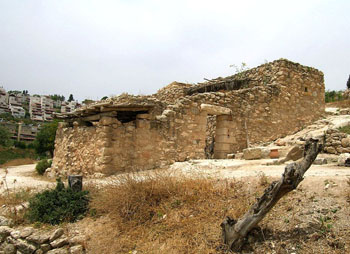 Msgr. Bartolini brought back with him from Nazareth specimens of stones and mortar extracted from ancient buildings in the town and from the surrounding area where the original Holy House had stood. (4)
Msgr. Bartolini brought back with him from Nazareth specimens of stones and mortar extracted from ancient buildings in the town and from the surrounding area where the original Holy House had stood. (4)
On his return to Rome in 1857, Msgr. Bartolini sent specimens from each place enclosed in separate packets, with nothing to indicate their origin, to the Professor of Chemistry at the Sapienza University, Dr. Francesco Ratti, with a request that he would analyze them. Dr. Ratti subjected the samples to a chemical and microscopic analysis, and his signed report (5) was published in full by Msgr. Bartolini in Italian. (6) It was translated into English by the Oratorian Fr. William Antony Hutchison in 1863. (7)
This showed that the physical characteristics of each of the stones were identical: calcium and magnesium carbonates together with ferruginous clay; that they were the constitutive elements of the type of limestone found in the area around Nazareth. (8) This is significant because there were no stone quarries in the whole region around Loreto, and all the houses there had to be built exclusively of brick. (9)
In a separate experiment, Dr. Ratti found that the samples of mortar from Nazareth and the Loreto house were composed of lime or chalk combined with vegetable charcoal, according to a technique used in Palestine 2,000 years ago, and unlike the volcanic substances found in the Italian soil.
As for the apparent discrepancy in color ‒ between red and grey ‒ mentioned by Dr. Stanley, this can easily be accounted for. The stones of Nazareth and Loreto were a mixture of both, i.e., a red-tinted grey, as described in Dr. Ratti’s report. (10) This, incidentally, corresponds to what a French traveller described when he visited the Holy House in 1688 and recorded having seen some “greyish or reddish stones.” (11)
If the stones of the Holy House had a “dark red polished” appearance when Dr. Stanley visited, this was produced by a combination of factors: the natural ageing process of the stone; (12) the sooty deposits of smoke from the constantly burning lamps; and contact by the touches and pious kisses of millions of pilgrims over the centuries.
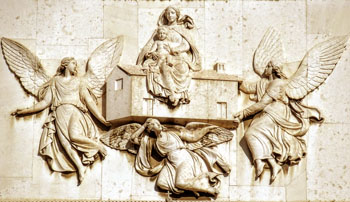 Dr. Stanley brought out a new edition of his famous book in 1866, acknowledging in a footnote (but without modifying any of his objections) that certain statements of his had been questioned by Fr. Hutchison, author of Loreto and Nazareth. He took great care, however, not to breathe a word about Msgr. Bartolini. But, as Fr. Hutchison remarked: “Had it not been for the attack on Loreto by Professor Stanley, we should probably not have enjoyed the benefit of the very remarkable investigations of Msgr. Bartolini.” (13)
Dr. Stanley brought out a new edition of his famous book in 1866, acknowledging in a footnote (but without modifying any of his objections) that certain statements of his had been questioned by Fr. Hutchison, author of Loreto and Nazareth. He took great care, however, not to breathe a word about Msgr. Bartolini. But, as Fr. Hutchison remarked: “Had it not been for the attack on Loreto by Professor Stanley, we should probably not have enjoyed the benefit of the very remarkable investigations of Msgr. Bartolini.” (13)
Whether or not Dr. Stanley was convinced by the investigations, the conversion of a fellow Anglican clergyman and Oxford tutor, Dr. Faller, was brought about by a study of the stones of the Holy House. The story, as told by the convert Fr. Marie-Alphonse Ratisbonne in 1856, has a truly ironic outcome.
Faller was even more determined than Stanley to disprove the tradition of the Holy House, and he set out for Nazareth armed with a copious supply of instruments and chemical substances to conduct scientific experiments on whatever traces remained of the abode of the Holy Family. Having minutely measured and analyzed the relevant material, he embarked for Loreto and repeated the same operations, comparing the results with those obtained at Nazareth.
Then, he returned to Galilee and Loreto to double check, only to realize, to his shame and confusion, that he had been guilty of prejudice. When he returned to Nazareth for the third time, it was not as a sceptical scientist, but as a convinced Catholic. (14)
Nullius in verba (Take nobody’s word for it) (15)
To the modern sceptical mind of the “I believe in science” variety, oral tradition is to be distrusted, and only empirical evidence believed. In support of the Loreto tradition, further research has been done in modern times by experts in archaeology and architecture working to the highest professional standards with their international reputations at stake. We will see how their findings impressively corroborated the oral accounts from Tersatto and Loreto.
Between 1962 and 1965 investigations were carried out by a team of excavators under the direction of the archaeologist and specialist in medieval topography, Nereo Alfieri, Professor at the University of Bologna, assisted by the geologist, Edmondo Forlani and by Fr. Floriano Grimaldi, Archivist of the Shrine. To their surprise, they confirmed the foundational pillars of the Loreto tradition: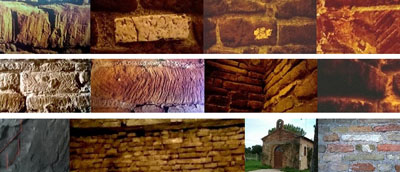 Alfieri showed the graffiti on the stones, without disclosing their provenance, to the internationally renowned Franciscan archaeologists, Fr. Bellarmino Bagatti and Fr. Emanuale Testa, of the Studium Biblicum Franciscanum of Jerusalem, who had recently been engaged in excavations of the Nazareth site.
Alfieri showed the graffiti on the stones, without disclosing their provenance, to the internationally renowned Franciscan archaeologists, Fr. Bellarmino Bagatti and Fr. Emanuale Testa, of the Studium Biblicum Franciscanum of Jerusalem, who had recently been engaged in excavations of the Nazareth site.
The two experts agreed that they were of early Judeo-Christian origin, and Fr. Testa noted that two of the hieroglyphics matched graffiti found in the grotto adjacent to the grotto where the Holy House had stood in Nazareth. (19)
In addition, the Italian architect and engineer, Nanni Monelli, performed extensive research on the stones of the altar in the Holy House, and established that they were of the same type and Nabatean workmanship as the other stones in the House. (20) This supports the oral tradition of a revelation by Our Lady in the 13th century that the Holy House had been used as a church even from the time of the Apostles. (21)
‘The very stones will cry out’
Tradition has always maintained that the three stone walls of the Nazareth house, together with its stone altar, were miraculously translated to Tersatto and Loretto. And scientific investigations have enabled the stones to speak out and declare themselves to be the house of the Virgin Mary, the very same dwelling that once stood in Nazareth, where she received Gabriel’s Salutation and the Word was made flesh, and where the Holy Family lived.
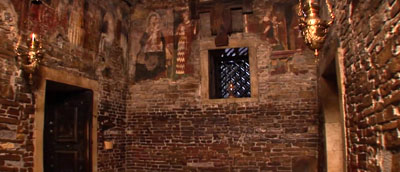 Fr. Angelita, of course, had said it all centuries ago, that the Holy House of Loreto was “the great, holy and awe-inspiring place where Christ the living God and Man with His Mother and Disciples lived, prayed, rested, ate and drank.” (22)
Fr. Angelita, of course, had said it all centuries ago, that the Holy House of Loreto was “the great, holy and awe-inspiring place where Christ the living God and Man with His Mother and Disciples lived, prayed, rested, ate and drank.” (22)
But most people today, even in the Catholic Church, while perhaps accepting the identity of the Holy House on scientific evidence, will a priori rule out supernatural explanations for its miraculous Translation to Loreto. While the scientific evidence does not provide absolute proof of this phenomenon, as always, in matters concerning the invisible power of God’s works in our world, the faith of a small child is needed.
Continued


That does not mean that they doubted the authenticity of the tradition; they were simply seeking evidence to further corroborate their beliefs. And so they were generally content to accept the assurances of pilgrims who had brought back from Nazareth samples of stone that looked, to the unprofessional eye, similar to the material from which the Holy House was built.

Dr. Stanley, second from left, on Holy Land Tour accompanying the Prince of Wales, fourth from left
As a historian and author of Sinai and Palestine (1856), he was regarded as the foremost authority in England on the Holy Land, a distinction that led to his selection as a guide and companion to the Prince of Wales on his travels to that region. So, what Stanley had to say on the subject was taken as gospel by his contemporaries.
He described the material of the Holy House as “a dark red polished stone wholly unlike anything in Palestine,” all the buildings there being “of the natural grey limestone of the country.” (2) The outcome was potentially devastating for the Holy House tradition. It would, of course, take an expert in mineralogy (which Stanley was not) to examine the chemical and physical (including optical) properties of the stone and declare on its composition and origin.
So, at the behest of the Cardinal Archbishop of Westminster, Nicholas Wiseman, a scientific examination was made of stone from the Holy House and from buildings at Nazareth. The English Prelate enlisted the help of Msgr. Domenico Bartolini (afterwards Cardinal), (3) who was then about to make a pilgrimage to Nazareth, and who obtained from Pope Pius IX permission to remove from the Holy House small portions of both stone and mortar for scientific analysis.

Stones of the Holy House of Loreto compared favorably to those in ancient buildings in Nazareth

On his return to Rome in 1857, Msgr. Bartolini sent specimens from each place enclosed in separate packets, with nothing to indicate their origin, to the Professor of Chemistry at the Sapienza University, Dr. Francesco Ratti, with a request that he would analyze them. Dr. Ratti subjected the samples to a chemical and microscopic analysis, and his signed report (5) was published in full by Msgr. Bartolini in Italian. (6) It was translated into English by the Oratorian Fr. William Antony Hutchison in 1863. (7)
This showed that the physical characteristics of each of the stones were identical: calcium and magnesium carbonates together with ferruginous clay; that they were the constitutive elements of the type of limestone found in the area around Nazareth. (8) This is significant because there were no stone quarries in the whole region around Loreto, and all the houses there had to be built exclusively of brick. (9)
In a separate experiment, Dr. Ratti found that the samples of mortar from Nazareth and the Loreto house were composed of lime or chalk combined with vegetable charcoal, according to a technique used in Palestine 2,000 years ago, and unlike the volcanic substances found in the Italian soil.
As for the apparent discrepancy in color ‒ between red and grey ‒ mentioned by Dr. Stanley, this can easily be accounted for. The stones of Nazareth and Loreto were a mixture of both, i.e., a red-tinted grey, as described in Dr. Ratti’s report. (10) This, incidentally, corresponds to what a French traveller described when he visited the Holy House in 1688 and recorded having seen some “greyish or reddish stones.” (11)
If the stones of the Holy House had a “dark red polished” appearance when Dr. Stanley visited, this was produced by a combination of factors: the natural ageing process of the stone; (12) the sooty deposits of smoke from the constantly burning lamps; and contact by the touches and pious kisses of millions of pilgrims over the centuries.

The study not only convinced one Anglican scholar of the miracle, but converted him to Catholicism
Whether or not Dr. Stanley was convinced by the investigations, the conversion of a fellow Anglican clergyman and Oxford tutor, Dr. Faller, was brought about by a study of the stones of the Holy House. The story, as told by the convert Fr. Marie-Alphonse Ratisbonne in 1856, has a truly ironic outcome.
Faller was even more determined than Stanley to disprove the tradition of the Holy House, and he set out for Nazareth armed with a copious supply of instruments and chemical substances to conduct scientific experiments on whatever traces remained of the abode of the Holy Family. Having minutely measured and analyzed the relevant material, he embarked for Loreto and repeated the same operations, comparing the results with those obtained at Nazareth.
Then, he returned to Galilee and Loreto to double check, only to realize, to his shame and confusion, that he had been guilty of prejudice. When he returned to Nazareth for the third time, it was not as a sceptical scientist, but as a convinced Catholic. (14)
Nullius in verba (Take nobody’s word for it) (15)
To the modern sceptical mind of the “I believe in science” variety, oral tradition is to be distrusted, and only empirical evidence believed. In support of the Loreto tradition, further research has been done in modern times by experts in archaeology and architecture working to the highest professional standards with their international reputations at stake. We will see how their findings impressively corroborated the oral accounts from Tersatto and Loreto.
Between 1962 and 1965 investigations were carried out by a team of excavators under the direction of the archaeologist and specialist in medieval topography, Nereo Alfieri, Professor at the University of Bologna, assisted by the geologist, Edmondo Forlani and by Fr. Floriano Grimaldi, Archivist of the Shrine. To their surprise, they confirmed the foundational pillars of the Loreto tradition:
- The Holy House had only three walls because it had stood before the mouth of a cave in Nazaret;
- Its masonry work was Nabatean, (16) native to the region of southern Palestine and unknown in the West;
- It had no foundations;
- It stood partly on a public road;
- It contained numerous graffiti (17) identified as those of the Judeo-Christian culture of the Holy Land. (18)

Stones & bricks of the Holy House carefully examined in the 1965 investigation: From the time of Christ
The two experts agreed that they were of early Judeo-Christian origin, and Fr. Testa noted that two of the hieroglyphics matched graffiti found in the grotto adjacent to the grotto where the Holy House had stood in Nazareth. (19)
In addition, the Italian architect and engineer, Nanni Monelli, performed extensive research on the stones of the altar in the Holy House, and established that they were of the same type and Nabatean workmanship as the other stones in the House. (20) This supports the oral tradition of a revelation by Our Lady in the 13th century that the Holy House had been used as a church even from the time of the Apostles. (21)
‘The very stones will cry out’
Tradition has always maintained that the three stone walls of the Nazareth house, together with its stone altar, were miraculously translated to Tersatto and Loretto. And scientific investigations have enabled the stones to speak out and declare themselves to be the house of the Virgin Mary, the very same dwelling that once stood in Nazareth, where she received Gabriel’s Salutation and the Word was made flesh, and where the Holy Family lived.

Walls of the Holy House of Loreto
But most people today, even in the Catholic Church, while perhaps accepting the identity of the Holy House on scientific evidence, will a priori rule out supernatural explanations for its miraculous Translation to Loreto. While the scientific evidence does not provide absolute proof of this phenomenon, as always, in matters concerning the invisible power of God’s works in our world, the faith of a small child is needed.
Continued

Transferral of the Holy House of Loreto by the Angels
by Rinaldi, San Salvatore in Lauro
- After being made a Canon of Canterbury Cathedral and a Professor of Ecclesiastical History at Oxford University, Stanley was installed as Dean of Westminster Abbey in 1864. His connections with the Royal Household were established when he married Lady Augusta Bruce, a lady-in-waiting of Queen Victoria.
- A. P. Stanley, Sinai and Palestine, in Connection with their History, London: John Murray, 1856, pp. 441, 442.
- Msgr. Domenico Bartolini (1813-1887) was in his own right a noted archaeologist, historian and hagiographer.
- Domenico Bartolini, Sopra la Santa Casa di Loreto confrontata cogli accessori di essa che rimangono in Nazareth di Galilea per confirmare l'autenticità osservazioni storico-critiche, topografiche, fisiche ed archeologiche, Rome: S. C. Propaganda Fide, 1861, p. 85. These included the cave in Nazareth adjacent to the original house, St. Joseph’s workshop and the local synagogue, St. Zachary’s house in the hill country of Judea and Jacob’s Well in Nablus.
- This report was reproduced in its original form in W. Garrett, Loreto the New Nazareth, London: Art and Book Co., 1895, pp. 27-28.
- Ibid., pp. 76-79.
- W. A. Hutchison, Loreto and Nazareth: Two Lectures, Containing the Results of Personal Investigation of the Two Sanctuaries. London: E. Dillon, 1863, pp. 80-82.
- Msgr. Bartolini (Sopra la Santa Casa di Loreto, p. 72) identified these as of two varieties of limestone: one hard (Jabes), the other soft (Nahari), the former constituting most of the masonry of the Holy House, the latter only a small area.
- Michele Faloci-Pulignani, La S. Casa di Loreto secondo un affresco di Gubbio, Rome: Desclée, 1907, p. 102.
- The Professor mentioned various shades of grey (“palombino”) and some stones with a reddish tint (tende un poco al rosso)
- François-Maximilian Misson, A New Voyage to Italy: with curious observations on several other countries, as Germany, Switzerland, Savoy, Geneva, Flanders and Holland, 2 volumes, London: R. Bentley, 1695, vol. 1, p. 233.
- D. Bartolini, (Sopra la Santa Casa di Loreto, p. 67) explained that this sort of stone becomes darker with age.
- W. A. Hutchison, Loreto and Nazareth, pp. 91-92.
- Alphonse Ratisbonne, Annales de la Mission de Notre Dame de Sion, 1858, apud Alphonse Eschbach CSSP, Lorette et l'Ultimatum de M. U. Chevalier, Rome: Desclée, 1915, pp. 53-54.
- Literally, “on the word of no one,” the motto of the Royal Society dates back to 1663 and expresses the Fellows’ belief that facts should not be accepted as true on authority but on empirical scientific methods.
- The Nabateans were a nomadic Semitic tribe from the Arabian Desert who spoke both Arabic and a dialect of Aramaic and settled in southern Palestine around Jordan. Their Kingdom, whose capital was the famous “rose-red” city of Petra, was still flourishing in the 1st century A.D. The Nabateans had developed a distinctive method of stonework, which is evident in the construction of the Holy House.
- Among the graffiti on the walls of the Holy House were crosses, chiro symbols and some Hebrew and Greek characters.
- N. Alfieri, E. Forlani, F. Grimaldi, ‘Contributi archeologici per la storia della Santa Casa di Loreto,’ Studia Picena 35, Loreto, 1967, pp. 64-128.
- Giuseppe Santarelli, Loreto. L’altra metà di Nazaret: la storia, il mistero e l’arte della Santa Casa, Milan: ed. Terra Santa, 2016, pp. 34, 36.
- Nanni Monelli, La Santa Casa a Loreto - La Santa Casa a Nazaret, Loreto: Congregatione Universale de la Santa Casa, 1991, and Giuseppe Santarelli, Nanni Monelli, L’altare degli Apostoli nella Santa Casa di Loreto, Loreto, 2012.
- This information comes from the testimony of Fr. Alexander, parish priest of Tersatto, that he had received a vision and miraculous cure from Our Lady when the Holy House was in Dalmatia. Copies of the documents recording this testimony and other Tersatto-related matters were sent to Fr. Angelita, Secretary of Recanati, and the originals had been seen by Fr. Franjo Glavinich (see Part 94).
- Girolamo Angelita, De Almae Domus Lauretanae in Agro Recanatensi Mira Translatione Brevis et Fidelis Enarratio (1531), p. 4: “In loco autem isto magno, sancto, atque terribili Deus & homo vivens Christus cum Matre & Discipulis versatus est, oravit, quievit, manducavit, bibit”.

Posted July 8, 2020
______________________
______________________
 Volume I |
 Volume II |
 Volume III |
 Volume IV |
 Volume V |
 Volume VI |
 Volume VII |
 Volume VIII |
 Volume IX |
 Volume X |
 Volume XI |
 Special Edition |


